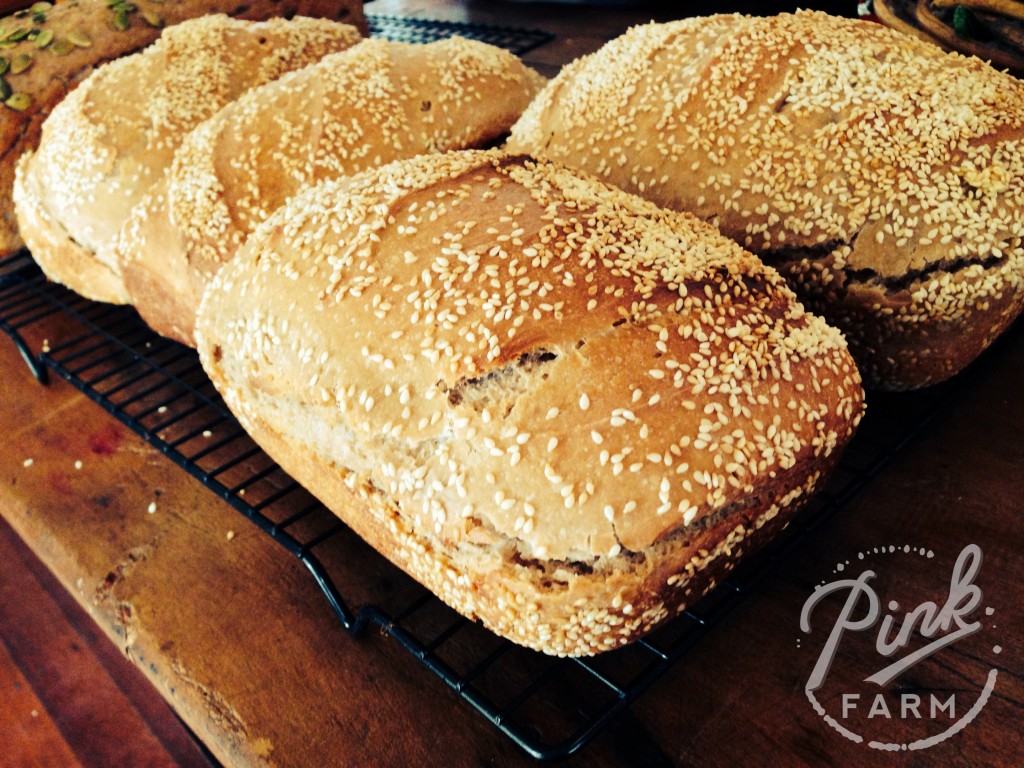Traditional Preparation Methods of: grains, nuts, seeds & legumes
Our ancestors and virtually all pre-industrialised people used traditional methods of soaking, sprouting, activating & fermenting to properly prepare grains, nuts, legumes & seeds before eating them. “The well-meaning advice of many nutritionists, to consume whole grains as our ancestors did and not refined flours and polished rice, is misleading and often harmful in its consequences; for while our ancestors ate whole grains, they did not consume them as presented in our modern cookbooks” (Fallon-Morell)
They did not at any time consume them in the forms that are readily available today thanks to modern methods of industrialised food. Modern day quick rise breads, breakfast cereals, muffins, cakes, pastries, crackers, muesli bars and packaged biscuits are not entities our ancestors would recognise, let alone the numerous foods that are filled with highly refined and processed grain products such as sausages, canned foods and sauces. Instead traditional Indian cultures made Idli from fermented lentils & rice, Europeans soaked grains for porridge and made slow rise breads from fermented starters (sourdough) and Australian Aborigines soaked seeds in dilly baskets in the rivers before drying and using for flours. Traditional cultures throughout the world have for thousands of years only eaten whole grains, nuts and seeds that were properly prepared.

TRADITIONAL METHODS OF PREPARATION:
1. Soaking – the practice of soaking and or sprouting can be used in preparation of grains, flours & legumes. The soaking time is between 7 and 24 hours in warm water with the addition of an acid such as whey, yoghurt, kefir, buttermilk, miso, lemon juice or apple cider vinegar. After this period you can then use in cooked recipes such as cakes, pastries, casseroles and side dishes.
2. Sprouting – of nuts, seeds, grains or legumes involves a shorter soaking period without the addition of an acid. After the soaking period the nuts, seeds, grains or legumes can be kept moist in a colander until they shoot just a tiny sprout. They can be used like this cooked or raw or dehydrated and stored for other cooked uses such as muesli & patties or ground into flour for breads and baked goods.
3. Activating– is used for the preparation of nuts and seeds whereby they are soaked for various times in warm salted water, drained and dehydrated at a very low temperature to preserve nutritional qualities. This method creates deliciously tasting crispy nuts and seeds to be used in various nut & seed butters and baked goods.
4. Fermenting – The fermentation process is usually applied to grains and legumes. This involves an extended period of soaking which encourages the proliferation of lactobacilli and natural yeasts. There are various methods depending on which you are making. Some grains are fermented to make probiotic beverages whilst others are fermented to make natural starters for sourdough breads. Lentils are fermented in some cultures to make savory pancakes.

WHY SOAK, SPROUT, ACTIVATE OR FERMENT?
1. To Neutralise Phytic Acid
What modern science has discovered about grains accords very well with the practices instilled by our ancestors when it comes to soaking, sprouting, activating or fermenting their grains, nuts & seeds before eating them. Phytic acid is an organic acid in which phosphorous is bound and is present in all grains, nuts and seeds in various degrees. Phytic Acid is a naturally occurring protective substance that deters predators from eating the plants’ seeds of progeny. Phytic Acid is particularly high in the outer layer or bran of the grain, nut or seed and when consumed by humans it acts as a potent mineral blocker. “Untreated phytic acid can combine with calcium, magnesium, copper, iron and especially zinc in the intestinal tract and block their absorption” (Fallon, p 452). The practice of soaking & fermenting promotes the activation of enzymes (such as phytase) & allows lactobacilli and other helpful organisms to breakdown and nuetralise the anti-nutrient effects of phytic acids.
2. To Increase beneficial enzymes – All seeds contain enzyme inhibitors. Soaking seeds and nuts in warm salty water inhibits any enzyme inhibitors thus encouraging the production of numerous beneficial enzymes. This in turn increases vitamin content (particularly B vitamins) in the seeds.
3. To partially digest proteins – Scientist have discovered that all grains contain proteins which are difficult to digest (especially gluten which is found in wheat, spelt, oats, barley, kamut & rye). A diet high in refined grains and whole grains that have not been properly prepared can place an enormous strain on the digestive tract. This can have long term negative effects leading to poor digestive mechanisms that lead to allergies, celiac disease, indigestion and candida overgrowth. “During the process of soaking and fermenting, gluten and other difficult to digest proteins are partially broken down into simpler components that are more readily available for absorption” (Fallon, p. 453).
4. To increase digestion & absorption of vitamins, minerals & proteins – The time consuming and extraneous methods that traditional cultures used to prepare these foods reflects the importance of eating grains, nuts, legumes & seeds this way. Traditional cultures prioritized the importance of careful preparation of grains, nuts, legumes & seeds to enhance their nutritional qualities and inhibit the ill effects that these foods may have in their whole, raw form.
5. Reduces Carcinogenicity – sprouting also inactivates aflatoxins, which are potent carcinogens found in grains.









 "Pinkfarm” has been created by 2 friends on a real food journey; learning, sharing, creating, inspiring and challenging politically correct nutrition. A country girl living on a farm on the beautiful Atherton Tablelands with a bustling house of 5 children and a city girl living in a metro Sydney townhouse with 1 beautiful son.
"Pinkfarm” has been created by 2 friends on a real food journey; learning, sharing, creating, inspiring and challenging politically correct nutrition. A country girl living on a farm on the beautiful Atherton Tablelands with a bustling house of 5 children and a city girl living in a metro Sydney townhouse with 1 beautiful son.







